Baseball History Comes Alive Now Ranked #2 by Feedspot Among All Internet Baseball History Websites and Blogs!
Guest Submissions from Our Readers Always Welcome!
Scroll Down to Read Today’s Essay
Subscribe to Baseball History Comes Alive for automatic updates (sign-up block found in right side-bar)
As a Free Bonus for subscribing, you’ll get instant access to my two Special Reports: Memorable World Series Moments and Gary’s Handy Dandy World Series Reference Guide!
“M & M Boys” Photo Gallery
Click on any image below to see photos in full size and to start Photo Gallery:
Today Paul Doyle revisits the pivotal baseball year of 1961. That’s the year Mickey Mantle and Roger Maris held their epic battle to break Babe Ruth’s 60 home run record. We all know the result: a new record and the infamous “asterisk.” I think you’ll enjoy Paul’s account of that race and its aftermath. -GL
“M&M BOYS” HIT HOME RUNS GOOD & PLENTY!
“You can’t break the 100-meter record in a 100-yard dash.” -Ford Frick, July 17, 1961 Press Conference
With the overabundance of home runs being hit in the majors over the last twenty years or so, we have almost forgotten the 60th anniversary of Roger Maris’ quest to break one of the most iconic records in the game: Most home runs in a season.
Let’s Recall 1961
The year 1961 began as a year of hope as the country was entering a new decade. President Kennedy was inaugurated on a cold, snowy day in Washington, D.C. with a speech that it was a beginning of a new age. The major leagues were almost a
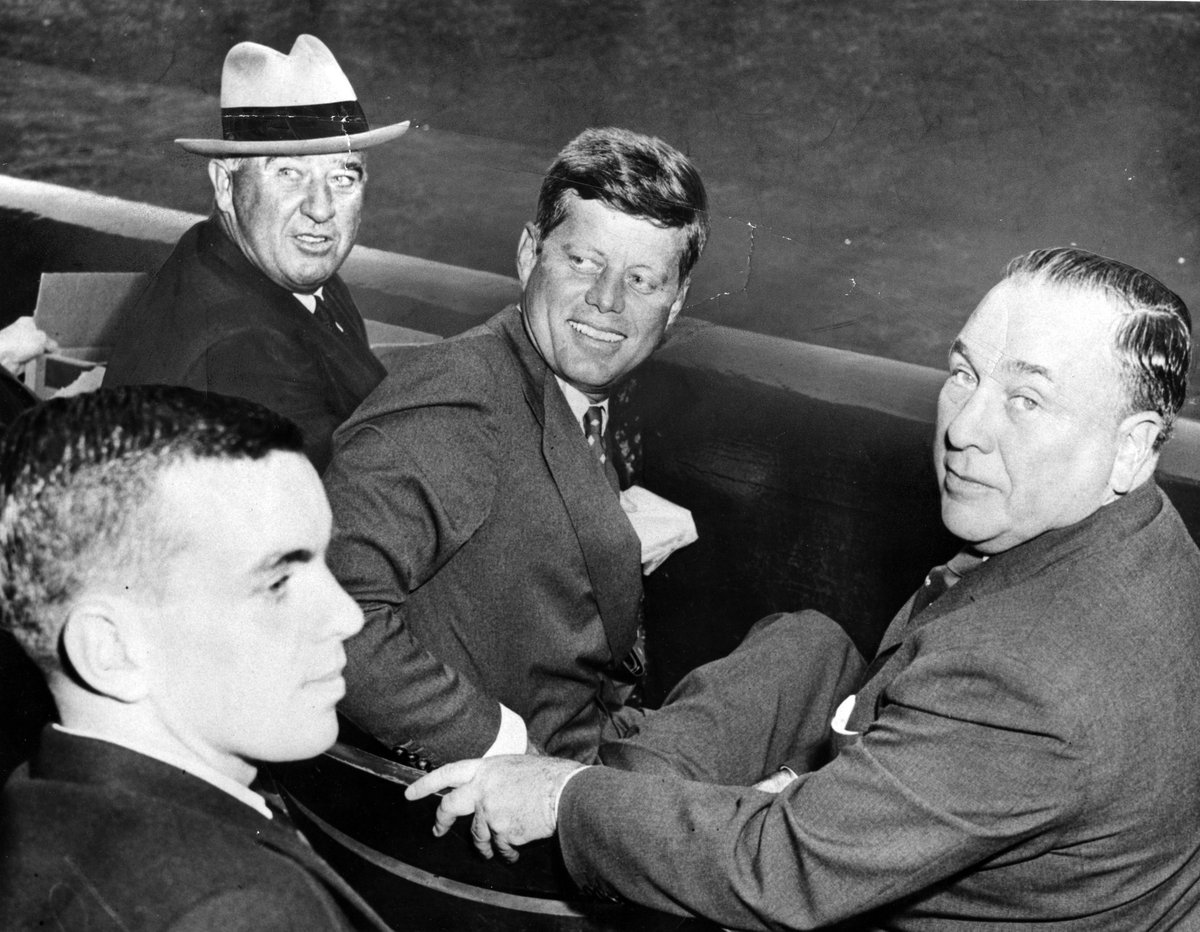
decade into franchise switches that saw five teams move to new cities. And, trying to keep their anti-trust exemption and shoot down rumblings of another major league forming, the American League expanded to ten teams, putting franchises in Washington, D.C. (to salve the wounds of Calvin Griffiths’ move to the Twin Cities) and Los Angeles. The National League would wait until the following year to expand to New York and Houston.
Old-timers lamented the perceived watering down of the game, especially from a pitching perspective. The 1961 season also brought with it a disparity in the scheduling as the American League expanded from 154 games to 162 to accommodate a balanced format. The National League had no need and kept the traditional 154 game season.
Initially, there was no outcry about the impact this would have on the game’s most sacred entity – the record book. The season began a few days earlier than its traditional mid-April start. The nation’s attention was soon diverted as the Russians shot the first man into space, Yuri Gagarin, and then the Bay of Pigs fiasco occurred in Cuba. These events shook Americans’ faith in the country’s scientific prowess and foreign policy leadership.
The New York Yankees began their season still licking their wounds from the loss of the 1960 World Series courtesy of Bill Mazeroski’s famous game-winning home run. This led to the firing of Manager Casey Stengel, with the Yankees saying old Case’ was “too old” (and Casey famously retorted that “I’ll never make the mistake of being 70 again”). The hiring of Ralph Houk (“The Major”) instilled hope that the managerial reins were in good hands as he had previously played with some of the guys he was now managing.
The Yankees’ season started with a 6-0 loss to the Minnesota Twins. Like most seasons, the cold days and nights of April were not conducive to the offensive side of the game. Mantle came out of the gate with seven home runs during that truncated month to just one for Maris.
The tables turned a bit as the calendar turned over to May. Hitting started to heat up as did the pennant races. Maris hit eleven that month and Mantle seven. As June began, Mantle still led Maris by a 14-12 margin. At this point,
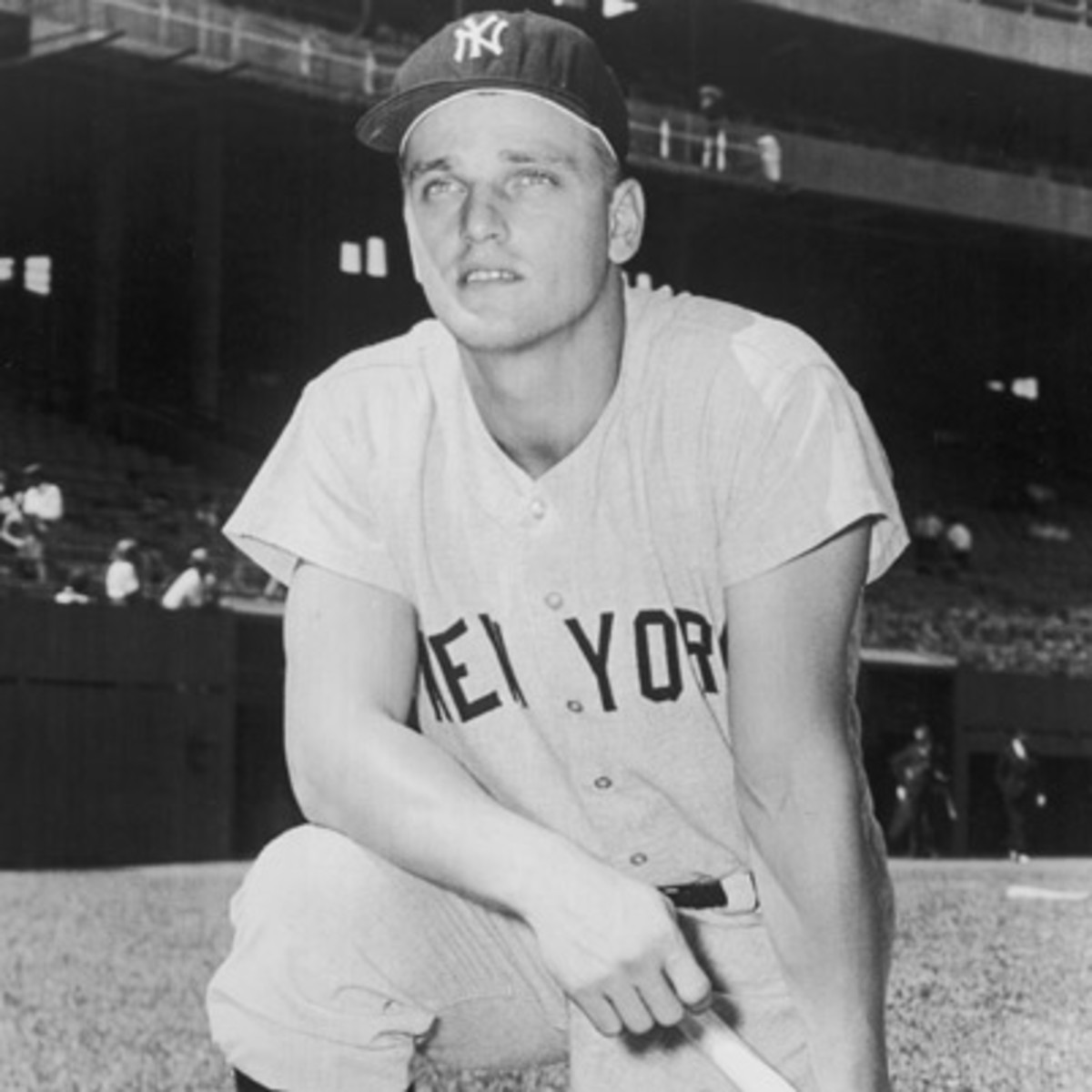
antenna went up as scribes went back and began to compare the two sluggers with Ruth’s 1927 pace. They found that the boys were breathing down the neck of the Bambino after 42 games, with Ruth at 15 home runs in the same number of games that season.
The Race Heats Up As The First All-Star Game Approaches
June didn’t cool their bats down a bit. Maris hit 15 to Mantle’s 11 and took the lead, 27 to 25. The season was now fast approaching the halfway mark. As we old-timers know, there were two All-Star games back then. The first pause was July 10-13, with Maris taking a 33-29 lead going into that game.
After the break, as the season proceeded, sportswriters began to focus on “what-ifs.” Ruth only had 154 games to hit 60 and the new age hitters had 162. On July 17, the baseball world was saddened by the death of Ruth’s rival Ty Cobb. At a news conference that day with Commissioner Ford Frick, writers asked Frick about the home run race and what impact breaking it would have on the record book.
Frick had been a friend of Ruth and had even helped ghost-write his autobiography. When asked, he responded: “You can’t break the 100-meter record in a 100-yard dash.” He further mentioned that a “distinctive mark” should be incorporated if the record was broken. Many believe it was Frick who came up with the “asterisk” suggestion, but, in reality, it was Dick Young of the New York Daily News who in the next day’s column stated that an asterisk would be appropriate.
The Season Turns to July
July saw both sluggers on their torrid paces as the leagues met for the second All-Star game played at Fenway Park on July 31. Maris led Mantle 40-39 in the race and the media attention became a daily blitz as both continued their run at the Bambino’s record. Old-timers such as Rogers Hornsby were publicly rooting against breaking the record. Others were saying that Mantle deserved to be the one to break it as his golden boy image contrasted with the intense and sullen Maris.
As the two competed against each other in the dog days of August, Maris continued his edge by hitting eleven to Mickey’s nine and took a 51-48 edge
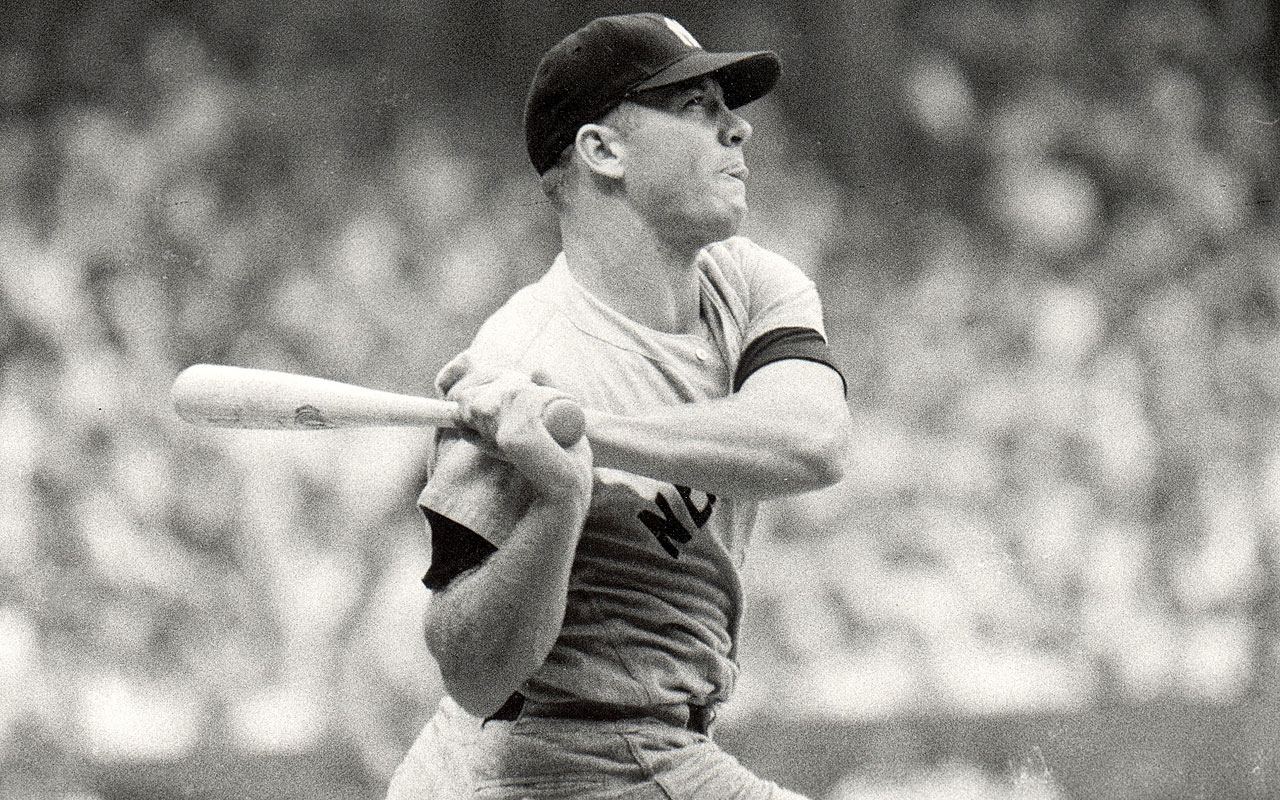
going into the final month of the season. The two each had 36 just before the second All-Star break until Maris hit four in a doubleheader against the White Sox on July 25. Mantle took a slight lead when he went on a multi-homer streak in early August, taking a 43-41 lead. Mickey cooled off somewhat after that.
Mickey Has An Injury
September would be where the gap widened as Mantle suffered a strained forearm muscle in early September. He still inched up to 50 on September 3, but by the 14th he was impeded by an upper respiratory illness. Missing a few games, he all but conceded the race. Maris continued on his pace to break the record, but with the 154 asterisk now staring him in the face. In an ironic twist, he hit number 58 on September 17 in game number 152.
The irony was that the Yankees would play Baltimore, Ruth’s birthplace, in a twi-night doubleheader. I can remember as an 11-year old boy that those games were televised nationally, almost unheard of for a weeknight game being televised at that level.
Maris had a poor first game. He would also be homerless in the second game of the doubleheader. The next night, however, he hit number 59, becoming the only player besides Ruth to reach that mark in history. Mantle came back and hit number 54 in Boston, which would be his last of the year. He went to see a doctor on the advice of Hall-of-Fame Yankee broadcaster Mel Allen. The magic shot that he took to feel better actually led to an infected hip and his regular season was over.
Roger Maris Sets the New Record…And Gains an Asterisk!
The Yankees’ last five games were at home: Two against Baltimore and three to close the season against the Red Sox. In the first game of the series against the Orioles, Maris hit his 60th home run to tie Ruth’s record, albeit in the 159th game.
We all know the rest of the story. On October 1, Maris stepped to the plate in the
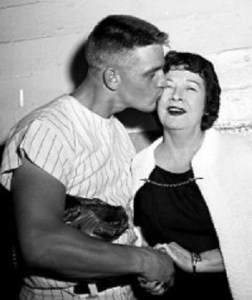
fourth inning and hit number 61 off Tracy Stallard. He had become a new home run king who was vilified by most baseball aficionados. Lost in the shuffle was the Yankees 109-53 record that year, Whitey Ford’s 25-4 record, and the destruction of the Cincinnati Reds in the World Series.
Maris, as we know, became a bitter man for the experience vowing never to return to Yankee Stadium after he left in the trade to the Cardinals. His famous quote of “Baseball is just like a kid with a train. You got to outgrow it sometime”.
But then again, we here at Baseball History Comes Alive never really grow up!
Paul Doyle
Sources: Season of Glory; Ralph Houk and Robert Creamer; Baseball Reference.com; Jack Doyle, “The M&M Boys: Summer of 1961,”
PopHistoryDig.com, August 21, 2018.
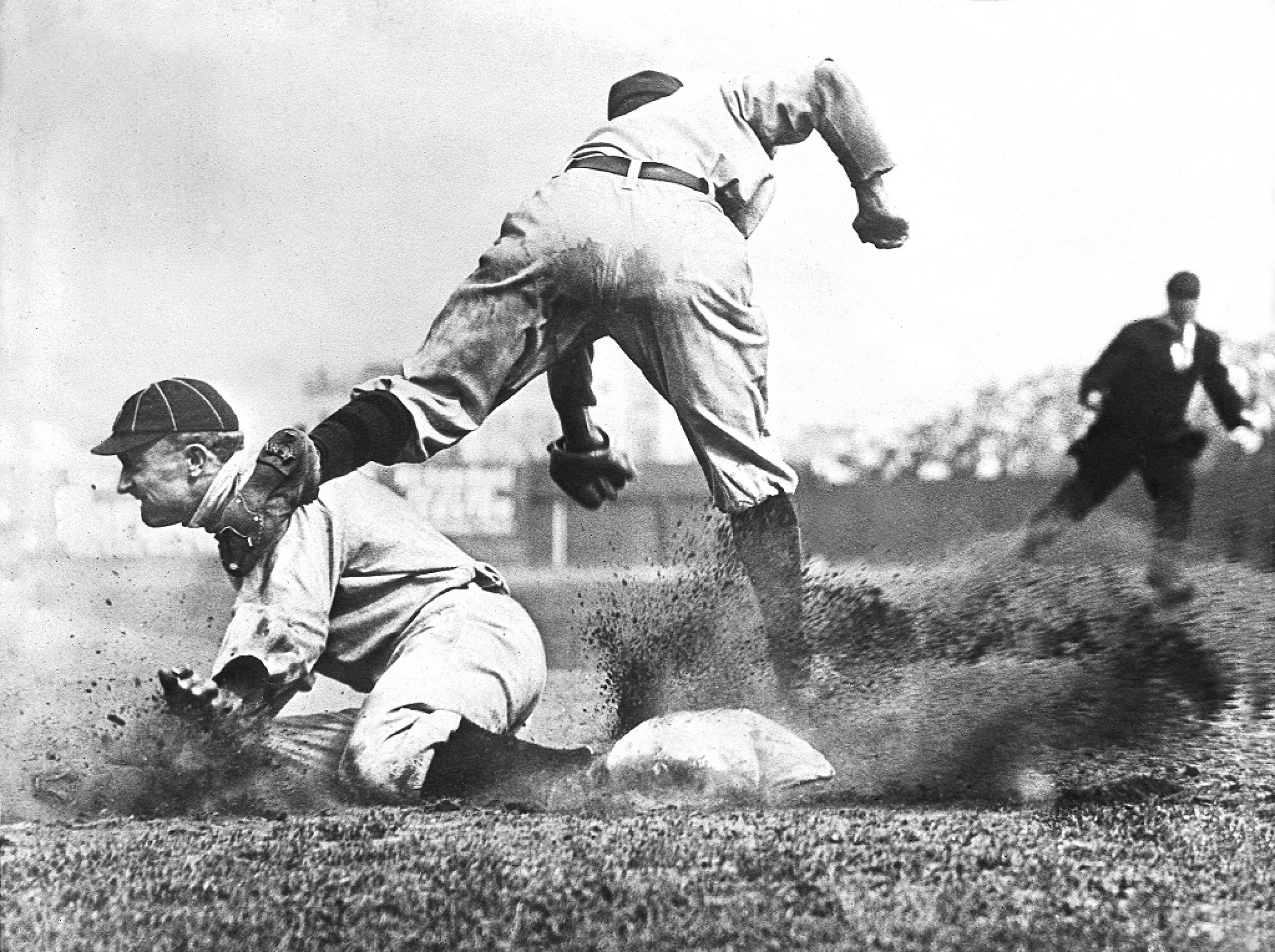
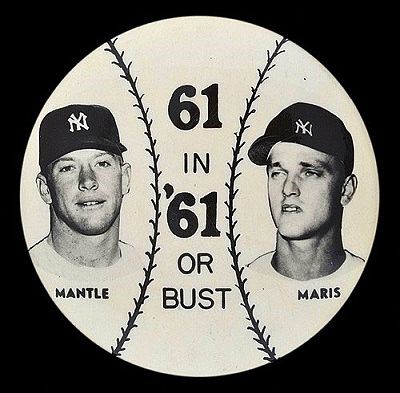
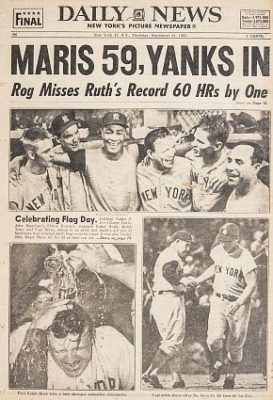
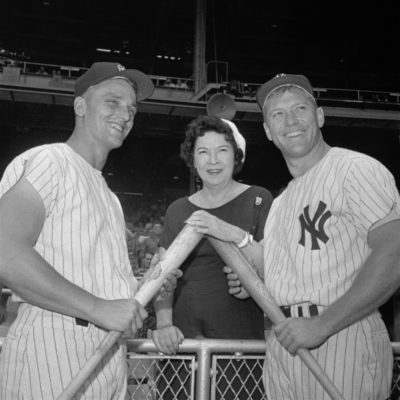

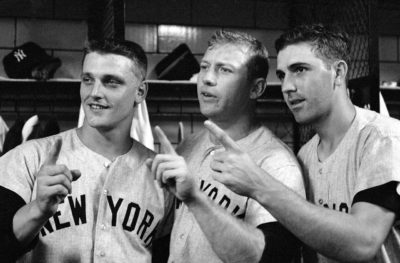
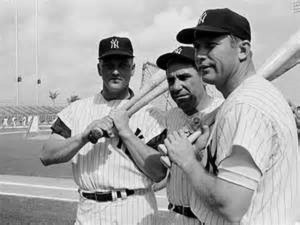
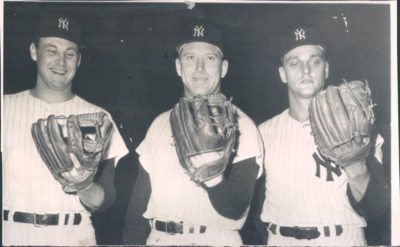
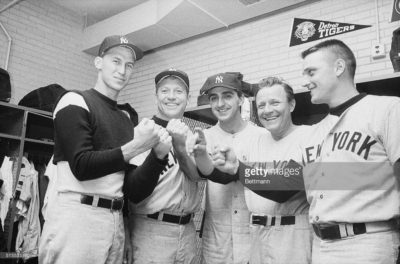
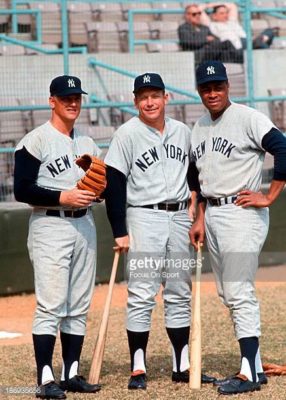
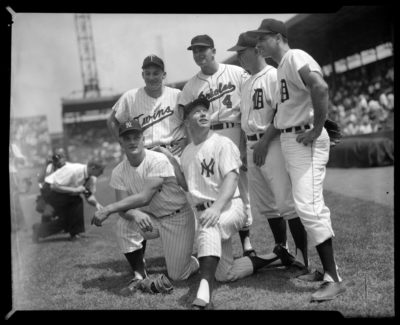
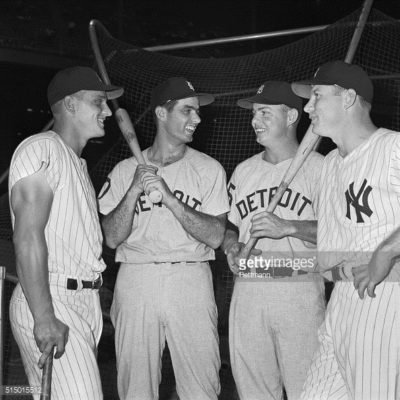
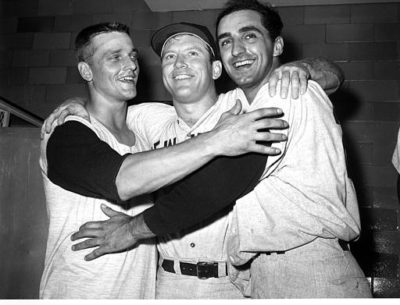
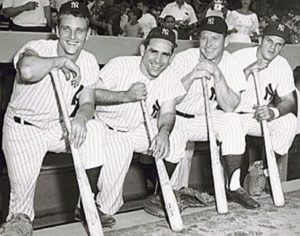
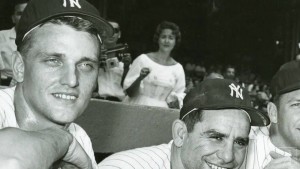
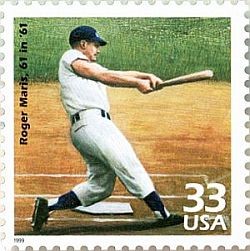
Really nice Paul! Liked the historical notes (“Ask not…Yuri Gagarin…Bay of Pigs…great shot of JFK at the ball park). Didn’t realize so many franchises changed venues–and that the National League was still playing 154.
No, I never intend to grow up. But I’m a little older kid than you. Graduated from Lehigh in ’61 and dated a girl who was part of a Roger Maris fan club. The girls used to call him “Chach” because Roger would nervously do a little dance in right field, awaiting the next pitch, that resembled the Cha Cha.
Love the Stengel quote. And Maris’ comment was poignant. He was so stressed from the pressure that year…didn’t his hair turn abruptly grey?
Tough luck for Mantle in September. And I can attest to the sullen Mick. From a NJ radio station in ’68, the News Director and I were at the Stadium. We interviewed “The Major” and we tried to get Mantle. I spotted him trotting across the infield, just before the game, and shouted, “Hey Mickey would you have just a minute for a quick interview?” Without breaking stride, he bellowed, “Nah!” Maybe on another day his mood might have been lighter.
Best, Bill
Nice insights Bill, thanks!
Graduated frome hs also in 61 loved the Rog and the Mick Rog had another habit at the plate that the girls missed we called it appropriately a Rog all that summer didn’t miss a pitch!!
Thanks, Bill.
1961 proved that the space age was more than putting men into space (Alan Sheppard joined Gagarin a few months later).
It was also a year of the slugger. Not only did Maris and Mantle chase the Babe’s record; The American League had 6 players hit 40 or more HR that year. The American League went from 1,086 HR in 1960 to 1,534 in 1961 albeit with two additional teams and more games played.
The National League also increased HR production in 1961, going from 1,042 to 1,196; MLB went from 2,128 HR in 1960 to 2,730 in 1961!
Watered down pitching as the cause? Yet just 7 years later in 1968 (The Year of the Pitcher), the totals were 1,995 combined, a drop off of 735.
Better development of pitching? Watered down hitting? That’s the beauty of baseball—who knows?
The following year, the numbers jumped to 3,119, but baseball expanded by four more teams in 1969 and split into four divisions (and also a lowered mound).
I have never seen any player treated like Maris was in 1961. The media crapped all over him. They didn’t want him to break Ruths record. I always found it interesting that the media wanted both Sosa and Mcguire to break the record and both of them were on the juice.
Very good point…thanks!
I didn’t realize the leagues played different number of games in ’61: National League played 154 and the American League played 162. Thanks for the info Paul. I wish they’d go back to 154.
Great post!
Someone commented on Facebook that earlier in the season Maris had hit a home run in a game in Baltimore that was erased due to a rainout. Didn’t know that.
I was 22 years old that summer and my wife was expecting my son on October 1st. As Maris kept hitting home runs I was pulling for him to hit 61 on the day my son was born. He was to be named Roger Maris Koch. M:y wife beat Maris by 2 days and my daughter was born. We named her Ronda and 15 years later we met Roger and told him the story. He was a great and humble man.
Thanks Ron, great story. I love the personal stuff like this.
Gary,
Both Maris and Mantle lost a HR in the second game of a doubleheader against Baltimore (on the same day that Frick had his press conference on the “distinctive mark” on July 17th).
Thanks Paul…didn’t know that either. You know me…I’m Chicago and National League-centric!
Maris was so disliked by the media that it turned the fans against him. When he hit his 61st Home Run there were a little over 20,000 people in attendance at Yankee Stadium that day.
Another interesting comment from Facebook:
“An Interesting fact is that the Detroit Tigers’ Norm Cash and Rocky Colavito combined for more RBIs in ‘61 than the M+M boys, 272 to 269.”